
Category: Scientists who were/are Christians
How I Begin and End My New Physics Book
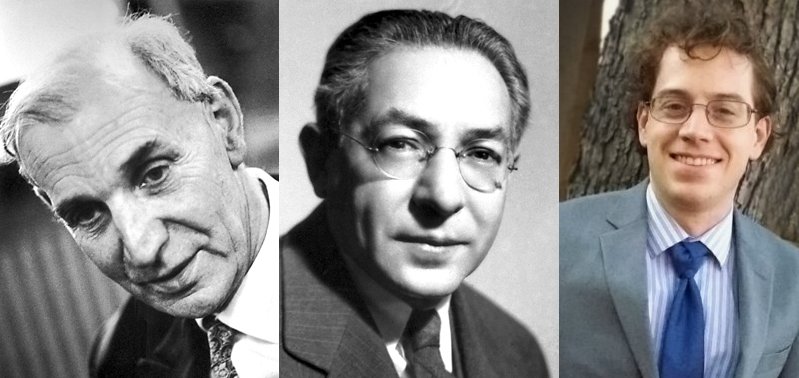
My blog has been mostly silent because I have been teaching classes and working on my new physics book, Discovering Design with Physics. However, classes are winding down, and my new physics book is at the printer. I will have a more thorough post about the book itself next week, including how it is different from my old physics book. For right now, however, I thought my readers might be interested in how it begins and ends. The introduction to the student text begins this way:
Have you ever taken something apart in an attempt to figure out how it works? I have. Usually, I end up ruining it and not learning much. On the rare occasion when I am successful, however, I get a wonderful feeling of accomplishment. In some ways, that’s what the subject of physics is all about. We try to “take the world apart” to see how it works. We look for laws and equations that allow us to analyze processes that occur on a very small scale (like electrons traveling through a conductor), processes that occur on an everyday scale (such as baseballs being hit by bats), and processes that occur on a very large scale (like planets orbiting the sun). If we can properly analyze these processes, we can start to understand how the world works.
As you start “taking apart” the world in this course, you should be struck by how intricately designed everything is. The world runs amazingly well, because all its parts have been designed to work together. As French physicist and Nobel Laureate Alfred Kastler states:
The idea that the world, the material universe, was created all by itself, seems absurd to me. I only conceive of the world with a creator, therefore a God. For a physicist, a single atom is so complicated and so rich in intelligence, that the materialistic universe has no meaning.
(Fabre-luce Alfred, L’été de la résurrection, Grasset 1971, p. 105, translated from French by Fernando José Walsh)
I hope that as you read this book, you will come to see the truth of Dr. Kastler’s words.
After spending 16 chapters “taking apart the world,” I end my discussion of physics this way:
You have reached the end of this high-school physics course. You have learned a lot about how God’s creation works, and I hope that this has given you a deeper sense of awe for our Creator. That’s certainly what studying physics has done for me. As I learn more and more about the intricacies of how the world works, I cannot help but be filled with wonder for its Designer.
I think Dr. Isidor Isaac Rabi, who won the 1944 Nobel Prize for physics, said it best:
Physics filled me with awe, put me in touch with a sense of original causes. Physics brought me closer to God. That feeling stayed with me throughout my years in science. Whenever one of my students came to me with a scientific project, I asked only one question, “Will it bring you nearer to God?”
(“I. I. Rabi As Educator and Science Warrior,” Physics Today, 52(9):38, 1999).
I think that’s a great question to ask of any endeavor you wish to pursue.
It’s important to note that many other scientists share Dr. Rabi’s view. Homeschool graduate Dr. Nathan T. Brewer is a nuclear physicist whose research is focused on creating new elements. He says,
The world is absolutely breathtaking, and studying the world’s beauty fuels my faith.
(https://blog.drwile.com/dr-nathan-t-brewer-homeschool-graduate-and-nuclear-physicist)
As you continue to study more of the amazing creation that God has given us, I hope you end up agreeing with Drs. Rabi and Brewer!
Science and Imagination

Last semester, I taught a course for Memoria College. Students read works from the great scientists of the past, and we discussed them. It was an excellent course, and I hope to teach it again this spring. After the class was over, they asked me to write an article about why reading scientific works from the past is so important. Here is what I wrote for them:
Dr. Allan Sandage: An Astronomer Who Found What He Was Looking for in Christianity
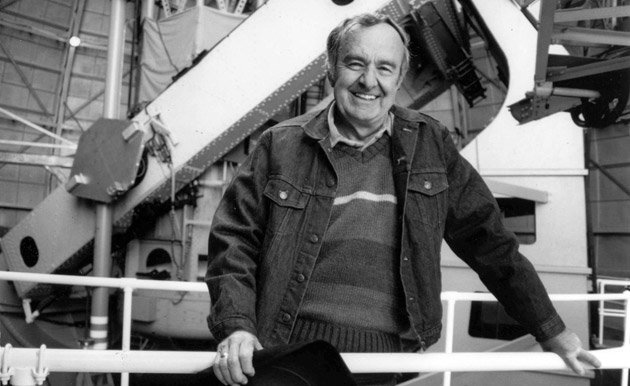
Dr. Allan Sandage is a giant in the field of astronomy. He published the first reliable measurement of the universe’s expansion rate. Unfortunately, we aren’t sure how close he was to the correct value, since it is still controversial. He amassed more than 500 papers in the peer-reviewed literature and received numerous awards for his work, including the prestigious Crafoord Prize, which at the time was worth 2 million dollars.
What was the motivation behind this impressive scientific career? According to “Negotiating the Boundaries of Science and Religion: The Conversion of Allan Sandage”, Sandage knew he had to be an astronomer at age 8, because he thought the world was magical, and he wanted to know WHY. As he matured, he had a desire to replace this “magical” perception of the universe with something more tangible. He wanted to see the universe as an analytical machine. Unfortunately, the more he learned, the harder it was to do that. The article linked above quotes him as saying:
As scientists…we have to try everything to discover how the world works. But the deeper you dig, the more complicated the thing becomes. There are layer upon layer of the intricate gears of a watch; and you keep uncovering layer upon layer, and finding more and more connections.
This brought him to the conclusion that every sensible scientist should make: the universe is the result of design. However, he decided that science cannot tell us many details about the Designer, and more importantly, it cannot tell us anything about why the universe was made and why we exist in it. Thus, in his quest to learn as much as he could about the “magical” world he remembered from his childhood, he had reached the limit of science. Science told him the universe is the result of design, but in order to truly understand the universe, he had to understand its Designer.
This led him to start looking into religion. He read not only the Bible, but also some of the great thinkers of Christianity, including Blaise Pascal. He was particularly struck by Pascal’s Wager, which essentially says that if you simply try to believe in Christianity, you have everything to gain and nothing worthwhile to lose. As a result, Christianity is the “best bet.” Dr. Sandage decided to make the wager. As he is quoted in The Seattle Times:
I could not live a life full of cynicism. I chose to believe, and a peace of mind came over me.
This reminds me of an engineer I wrote about roughly three years ago, who also came to Christianity partially as a result of Pascal’s Wager.
In the end, Dr. Sandage’s remarkable scientific research laid the foundation for his conversion to Christianity. It didn’t prove the existence of God, but it prepared him to believe in God. Reading the Bible and some of Christianity’s great thinkers then convinced him that Christianity was the only way he would find the answer to the question he had been asking himself since he was a boy. As he was quoted in Newsweek:
It was my science that drove me to the conclusion that the world is much more complicated than can be explained by science…It is only through the supernatural that I can understand the mystery of existence.
Scientist Who Prays for Insight Revolutionizes Recycling
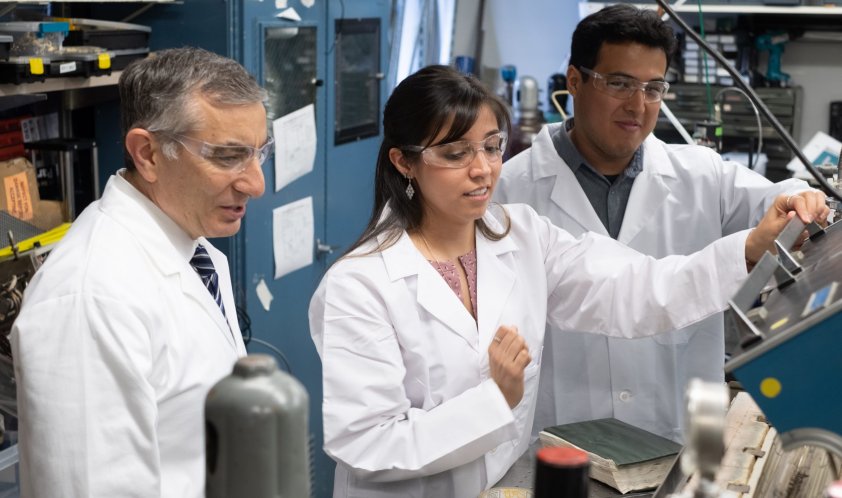
I have written about Dr. James Tour before. He is a giant in the field of synthetic organic chemistry. Because he spends his days making molecules, he knows that despite the bluster coming from evolutionary evangelists, we have absolutely no idea how the molecules of life could have been formed from nonliving matter. As a good scientist, he doesn’t rule out the possibility that it might have happened. However, he tries to educate people about how little we know regarding this hypothetical process so they are not fooled by the lies they hear from their teachers and read in their textbooks.
I am writing about him again because he and his group just published a paper that will truly revolutionize the recycling industry. In fact, it turns recycling into upcycling, because it makes the waste into something more versatile than the original products. The process described in the paper can take anything that is mostly carbon (like plastic) and convert it into graphene, which is many times stronger than steel but much more lightweight and flexible. This makes it ideal in many applications. As the University of Manchester says:
Transport, medicine, electronics, energy, defence, desalination; the range of industries where graphene research is making an impact is substantial.
Interestingly enough, graphene comes in two forms, and the form that Dr. Tour’s process makes is the easier one to use in most industrial applications.
The process involves taking any material that contains high amounts of carbon, grinding it into a fine dust, and zapping it with enough electricity to break every bond in the material. All non-carbon atoms form molecules that are vaporized, and the carbon is left behind in the form of graphene.
In their experiments, they used the plastic material from a truck’s bumpers, seats, carpets, and gaskets. They put it through their process and gave the graphene they produced to the Ford Motor Company, which then used it to make new plastic components for their trucks. These new components performed the same as components produced with unrecycled graphene.
According to their paper, published in the journal Nature:
A prospective cradle-to-gate life cycle assessment suggests that our method may afford lower cumulative energy demand and water use, and a decrease in global warming potential compared to traditional graphene synthesis methods.
This incredible achievement is noteworthy enough, but I want to spend a moment on the man behind it. Dr. Tour is a Christian and has written a detailed account of how his faith helps his scientific research in a document entitled Faith of a Scientist: The Impact of the Bible on a Christian Professor. In it, he states:
As a scientist, when posed with scientific mysteries that have presented themselves in my research, I have so often bowed my heart and prayed, “Lord, make your light shine on this darkness. When no others can see, please Lord, let me see.” On many occasions, when graduate students have brought their puzzling laboratory results and laid them on my desk, I have been as baffled as they. So remembering [Psalm 112:4], which I had long before committed to memory, I pray for light, and God answers. Surely, meditating on God’s word can cause light to arise in darkness even for the challenges that confront our secular careers.
While this might sound odd to closed-minded secularists, Dr. Tour is not alone in using his faith to aid his scientific work. In fact, the father of the scientific method (Roger Bacon) wrote1:
For the grace of faith illuminates greatly, as also do divine inspirations, not only in things spiritual, but in things corporeal and in the sciences of philosophy;
Copernicus put the sun at the center of what he called “the world” because that made the system more orderly, and he said that this made more sense, since the world was made by “the Best and Most Orderly Workman of all”2. Kepler use the Trinity as a basis for his model of the universe, with the sun at the center representing God the Father, the sphere that held the stars representing God the Son, and the space in between representing God the Holy Spirit. James Clerk Maxwell, the genius who discovered that light is an electromagnetic wave, also prayed to received scientific enlightenment.
There are those who say that Christianity and science are incompatible. In no uncertain terms, scientific luminaries from Roger Bacon to Dr. James Tour demonstrate that this notion is 100% false.
REFERENCES
1. The Opus Majus of Roger Bacon, Robert Belle Burke (trans.), (Russel & Russell, Inc. 1962), p. 585
Return to Text
2. Nicolaus Copernicus, On the Revolutions of the Heavenly Spheres, R. Catesby Taliaferro (trans.), Great Books of the Western World, (Encyclopedia Britannica, 1939), vol. 16, p. 508.
Return to Text
Physics Helps You Understand the Mysteries of Christianity
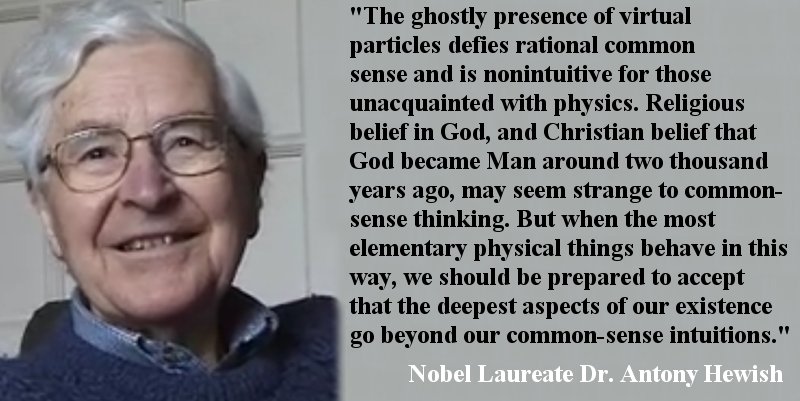
Dr. John Charlton Polkinghorne was a theoretical physicist whose work was important enough to earn him election as a fellow in the longest-lived scientific organization in the world, the Royal Society. However, after 25 years of contributing to our knowledge of God’s creation, he decided that his best work in physics was behind him, so he began training to become an Anglican priest. After being ordained, he served in the Anglican Church for 14 years before retiring.
Obviously, Dr. Polkinghorne’s education and life experiences make him an authoritative voice when it comes to the relationship between Christianity and Science. He wrote a lot about the subject, and while I often disagree with him, I have read and appreciated much of what he has written. In 2009, he and one of his students (Nicholas Beale) wrote a book entitled, Questions of Truth: Fifty-one Responses to Questions about God, Science, and Belief. I read it quite a while ago, and I reacted as I usually did – agreeing with some parts of the book and disagreeing with others. However, I was thumbing through it to find a quote I wanted to use, and the Foreword caught my eye. I don’t think I read it when I read the book, so I decided to take a look at it.
It was written by Nobel Laureate Dr. Antony Hewish, who was an astronomer and a devout Christian. In less than two pages, he makes one of the most interesting arguments I have ever heard regarding the relationship between science and Christianity. He first makes the point, which I make over and over again when I teach science, that science does not follow common-sense thinking. Aristotle used common-sense thinking to come to the conclusion that all objects have a natural state of being at rest, and you have to force them out of that state to get them to move. Galileo and Newton followed experiments rather than common sense, and they demonstrated that an object has no preferred state of motion. It remains in its current state until it is acted on by an outside force. That non-common-sense notion is now called Newton’s First Law of Motion.
Of course, since Dr. Hewish is well-versed in physics, he gives a better example of how physics doesn’t follow common-sense thinking and then makes a conclusion from this fact:
For example, the simplest piece of matter, a hydrogen atom, cannot be accurately described without including the effects caused by the cloud of virtual particles with which it is surrounded. There is no such thing as truly empty space. Quantum theory predicts that even a perfect vacuum is filled with a multitude of particles that flash into and out of existence much too rapidly to be caught by any detector. Yet their existence modifies the motion of electrons orbiting protons in a calculable way that has been verified by direct observation. The ghostly presence of virtual particles defies rational common sense and is nonintuitive for those unacquainted with physics. Religious belief in God, and Christian belief that God became man around two thousand years ago, may seem strange to common-sense thinking. But when the most elementary physical things behave in this way, we should be prepared to accept that the deepest aspects of our existence go beyond our common-sense intuitions.
(John Polkinghorne and Nicholas Bealexii, Questions of Truth: Fifty-one Responses to Questions about God, Science, and Belief, (Presbyterian Publishing 2009), p. xii)
In the end, Dr. Hewish is making the case that understanding modern physics should make you more inclined to be a Christian (or at least more inclined to be religious), since it conditions you to believe that the universe is based on mysterious processes that cannot be directly observed.
I have to say that this has happened in my own life, even though I was not aware of it. I went from being an atheist to believing in some kind of Creator because science showed me that the universe was obviously the result of design. I eventually became a Christian because after reading extensively on world religions, by grace I saw that Christianity is supported by the most evidence. I was initially very uncomfortable with the mysteries that are inherently a part of Christianity, but as I grew older, I became more and more comfortable with them. I thought that this was because I had grown accustomed to them. However, after reading Dr. Hewish’s foreword, I noticed that my level of comfort with the mysteries of Christianity coincided with my increasing knowledge of quantum mechanics.
Dr. Hewish seems to have hit the nail on the head, at least when it comes to how modern physics has helped me grow in my faith.
The Heavens Tell of the Glory of God
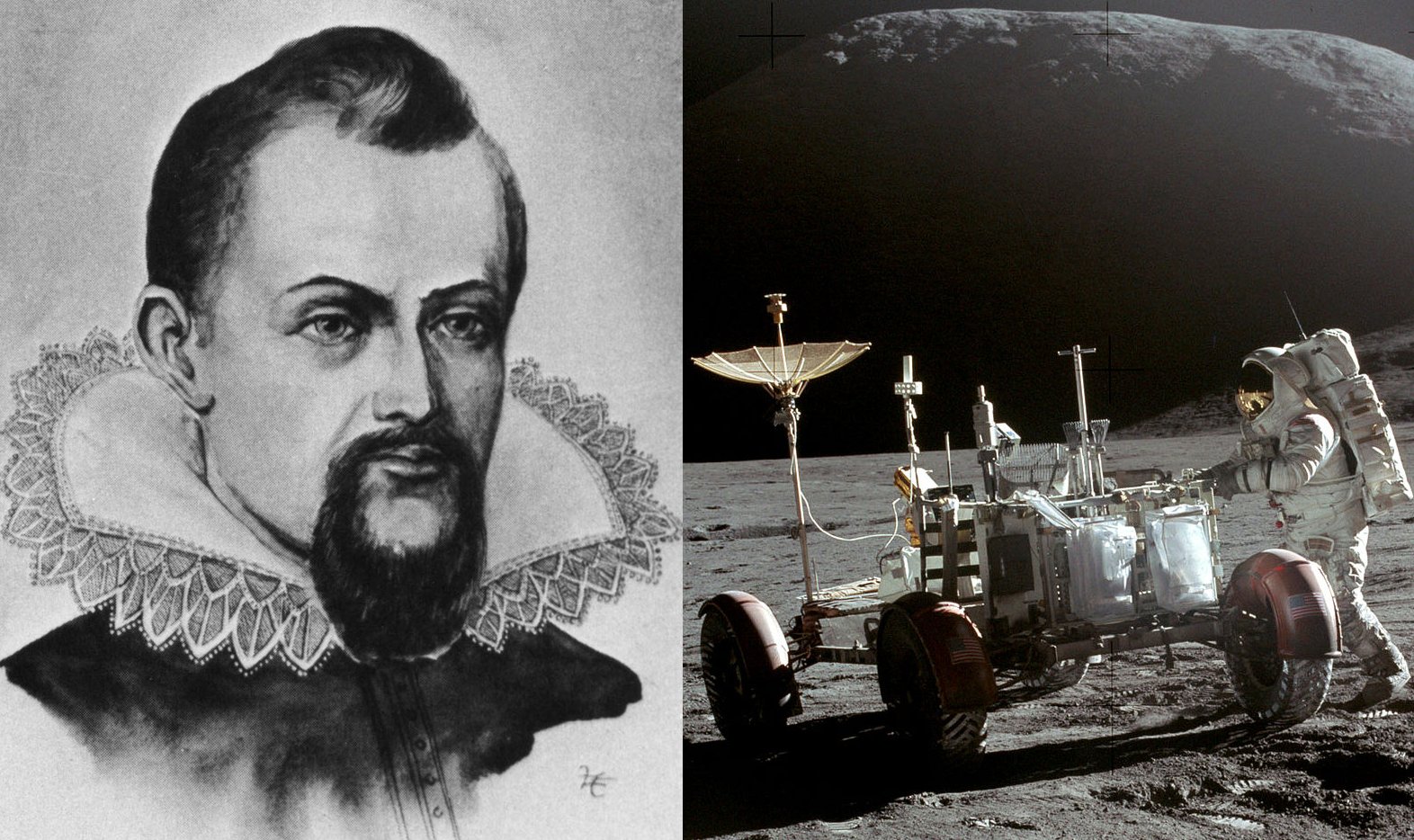
As I wrote previously, one of the reasons I took a break from blogging was so that I could concentrate on teaching a Master’s Class at Memoria College this year. In that class, we read the great natural philosophers of the past, from Archimedes to Darwin. Many of the students remarked on how often God was mentioned in these works, especially the works of astronomy. For example, Johannes Kepler (1571-1630), the brilliant astronomer who figured out that planets orbit the sun in ellipses, not circles, described the sphere of the universe this way:
For in the sphere, which is the image of God the Creator and the Archetype of the world-as was proved in Book 1-there are three regions, symbols of the three persons of the Holy Trinity – the center, a symbol of the Father; the surface, of the Son; and the intermediate space, of the Holy Ghost.
(Johannes Kepler, Epitome of Copernican Astronomy – Book IV, First Book on the Doctrine of the Schemata [436])
In other words, he saw the Trinity in his model of the universe. The sun represented God the Father, the outer edge of the universe (where he thought all the stars resided) represented God the Son, and the area in between represented God the Holy Spirit.
I find it refreshing that scientists like Kepler were comfortable relating their science to their faith. Nowadays, that kind of language is censored from the scientific literature, but for most of history, it wasn’t. That’s one of the many benefits of reading scientific works from the past. It allows you to see the incredibly strong, positive impact Christianity had on science.
I asked the class why Kepler viewed the universe the way he did. One student (a pastor) gave a Bible verse as his answer:
The heavens tell of the glory of God; And their expanse declares the work of His hands. Day to day pours forth speech, And night to night reveals knowledge.
(Psalm 19:1-2, NASB)
In this student’s opinion (with which I agree), a person must strongly compartmentalize his or her thinking in order to study the universe and deny that God’s power and majesty are reflected in it.
In support of that idea, another student mentioned Astronaut James Irwin. After coming home from walking on the moon, he wrote a book entitled More than Earthlings. In it, he explained how his trip to the moon inspired him to take his Christian faith more seriously:
Being on the moon had a profound spiritual impact upon my life. Before I entered space with the Apollo 15 mission in July of 1971, I was a lukewarm Christian, to say the least! I was even a silent Christian, but I feel the Lord sent me to the moon so I could return to the earth and share his Son, Jesus Christ. The entire space achievement is put in proper perspective when one realizes that God walking on the earth is more important than man walking on the moon. I believe that God walked on the earth 2,000 years ago in the person of Jesus Christ.
As a result, he started the High Flight Foundation, which works “…hand in hand with leaders serving the Nations and the people as they discover God’s destiny for their lives and Nation.”
Johannes Kepler and James Irwin are just two of the many scientists who recognize that the heavens do, indeed, tell of the glory of God. In fact, that is the most important reason students should study science. The more you learn about science, the more you should be in awe of the power and majesty of God!
Another Atheist Comes to Christ Because of Science
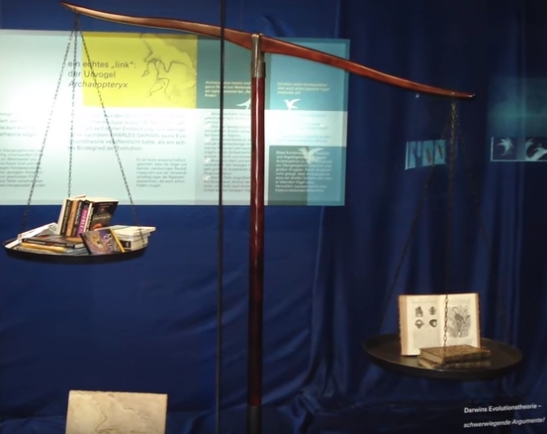
In 2009, one of the largest German events celebrating the 150th anniversary of Darwin’s book, On the Origin of Species, was headed up by Dr. Günter Bechly, a world-renowned paleontologist with an incredibly impressive list of original research published in the peer-reviewed literature. At the time, he was the curator of the Stuttgart Museum of Natural History, and he wanted to show, in no uncertain terms, that there is absolutely no scientific dispute about origins. As a result, one of the displays in his museum’s celebratory exhibit (shown above) was a scale with creationist and intelligent design resources on one side and Darwin’s book on the other. Darwin’s single book tipped the scale, indicating that the weight of the scientific evidence was in evolution’s favor.
There was only one small problem. Dr. Bechly had not actually investigated any of the resources that were on the “light” side of the scale. Oh sure, he had read other evolutionists’ views on those resources, but he had not actually investigated them himself. He decided to do so, and he was surprised by what he found. As he explains in the documentary Revolutionary: Michael Behe and the Mystery of Molecular Machines:
…and what I recognized to my surprise is that the arguments I found in those books were totally different from what I heard either from colleagues or when you watch Youtube videos where the discussion is around intelligent design versus NeoDarwinian evolution. And I had the impression on one side that those people are mistreated – their position is misrepresented and on the other hand that these arguments are not really receiving an appropriate response. And they have merit.
He ended up being scientifically convinced that Intelligent Design is the better explanation for the amazing world he had been studying his entire career, and he made that decision public in 2015. Then he faced a firestorm.
Continue reading “Another Atheist Comes to Christ Because of Science”
André Marie Ampère: A Fascinating Genius and Devout Christian
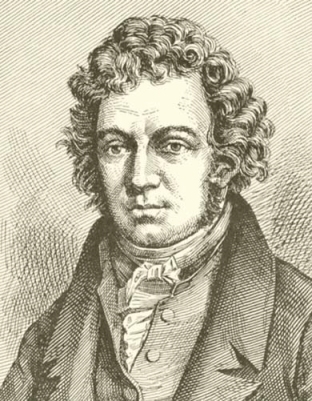
Ampère was born into a wealthy French family, which meant that he could have received the best education money could buy. However, his father wanted him to learn on his own. His father never required him to learn anything, but he inspired his son to want to learn. You might say that Ampère was “unschooled.” According to a friend that knew him well, unschooling seemed to work for him. Ampère read all the volumes of the encyclopedia in his father’s library, starting with the first volume and reading in alphabetical order. He also read extensively on natural philosophy (science).
Unfortunately, his life was marred with three serious tragedies. His sister died when he was 17. The next year, his father was executed as a result of the French Revolution. This hit him particularly hard. He had no more interest in learning, and some of his friends thought that he had lost all reason. Then he discovered Jean-Jacques Rousseau’s Letters on the Elements of Botany, and he was pulled from his intellectual lethargy. He later fell in love with and married a woman named Julie, but she died only a few years later.
Despite these terrible tragedies, Ampère was a devout Christian his entire adult life. When his wife died, he wrote two verses from the Book of Psalms and the following prayer:1
O Lord, God of Mercy, unite me in Heaven with those whom you have permitted me to love on earth.
Continue reading “André Marie Ampère: A Fascinating Genius and Devout Christian”
Dr. Patrick Briney, Atheist-Turned-Christian
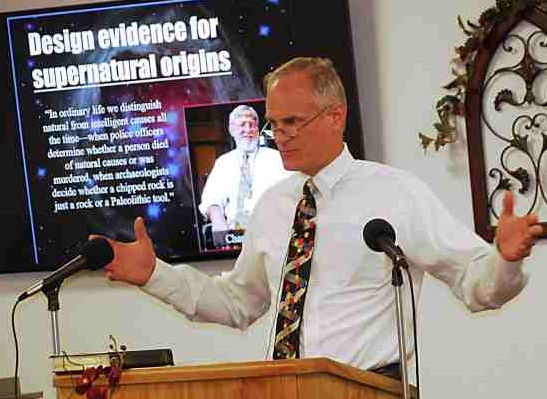
As many readers probably know, I was once an atheist but was “argued into the Kingdom.” Because of this, I tend to collect stories of other atheists who have become Christians. What intrigues me about these stories is that few of them are alike. God seems to use many different means to call people to Him, which is both wonderful and fascinating. Every now and again, however, I find a story that is similar to mine. Recently, I learned about Dr. Patrick Briney, and while there are some differences between his journey and mine, there are some similarities as well.
In his personal story, he talks about wanting to be a medical doctor from an early age. When he went to university to start pursuing his dream, however, something happened. A young lady who eventually became his wife called him to tell him that she had become a Christian, and she put him in contact with a person on his campus, the University of California, Irvine. According to Dr. Briney, this
…led to Bible studies, discovering answers, and eventually my salvation about two years later.
In this version of his story, he is short on the details, but according to another article he wrote, creation science played a role in this process. As I read that article, I couldn’t help but notice the similarities (and differences) between his story and mine.
Continue reading “Dr. Patrick Briney, Atheist-Turned-Christian”
